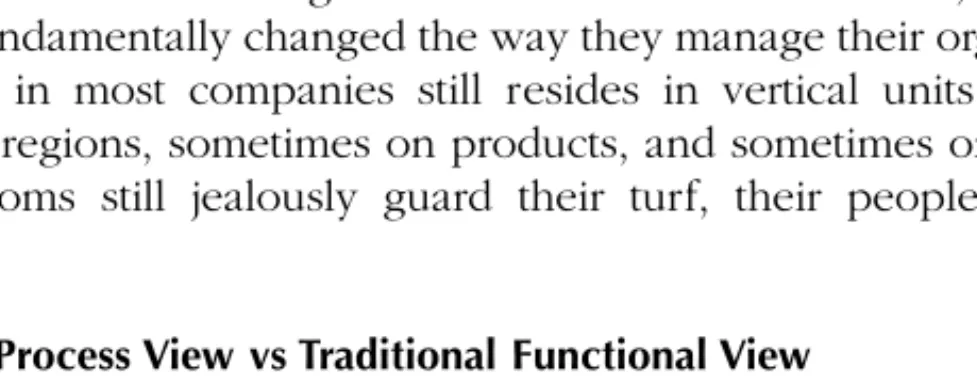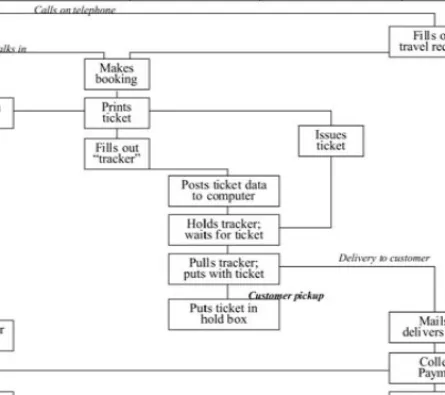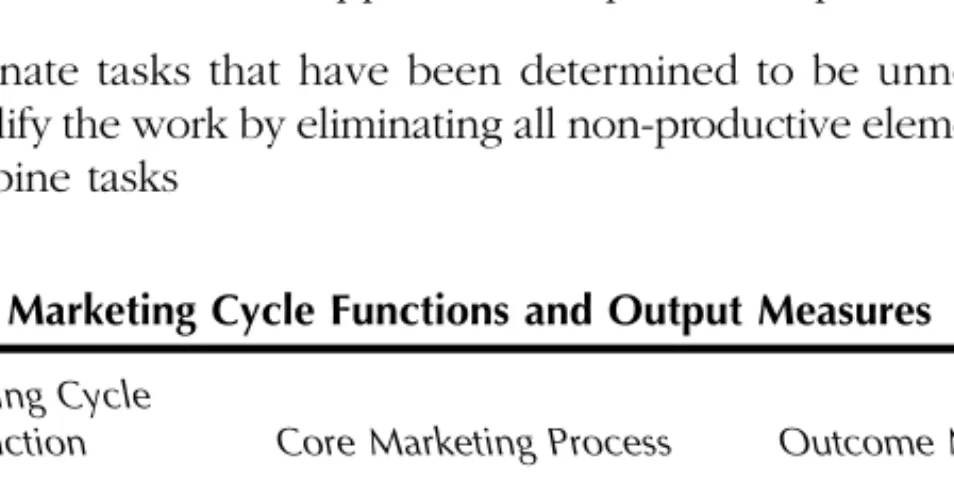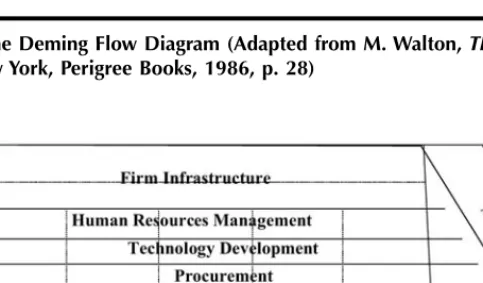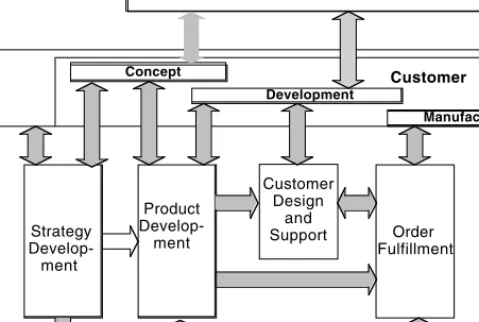Business Process Orientation: Gaining the Competitive E-Business Advantage is written to help business practitioners and academics understand the impact that well-defined and carefully integrated processes have on organizational performance. The second section of Business Process Orientation: Gaining the Competitive Advantage of E-Business offers four actual cases that provide practical examples of how process design and improvement create high value and a sustainable competitive advantage.
THE AUTHORS
Johnson has consulted with the beverage, healthcare, telecommunications, cosmetics and industrial chemical industries. He has published in journals such as The Journal of Applied Management and Entrepreneurship, Journal of Business and Industrial Marketing, Computers and Industrial Engineering International Journal, Marketing Education Review, The Journal of Marketing in Higher Education, Marketing News, International Business Chronicle, Arizona Business Education Journal, The Marketing Connection, Industrial Engineering International Journal, and Beverage World.
INTRODUCTION
Process control will be a key factor in achieving a sustainable competitive advantage in the Internet economy. However, process control must be understood in the context of customer value, the subject of the next section.
PROCESS AND VALUE
KEY ORGANIZATIONAL PROCESSES
We maintain that processes and service are inseparable, that is, the process is the service. One of the process indicators of the customer service process is to measure customer satisfaction levels.
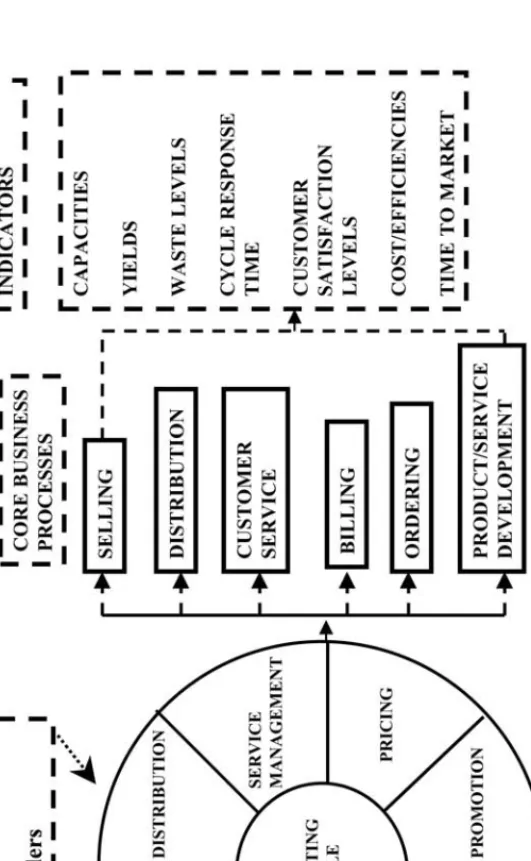
SUMMARY
In most cases, the people who perform the specific processes under study are the ones best able to determine how to improve or simplify the process. The focus of this book is how to practice a business process orientation (BPO), that is, designing business operations and processes that create value.
PROCESS IN FOCUS 5
NOTES
HISTORY OF BUSINESS PROCESS ORIENTATION
This new way of thinking or looking at an organization has been generally described as Business Process Orientation or BPO. The remainder of this chapter presents key contributions to the history of business process orientation and the imperatives for e-corporation.
FUNCTIONAL ORIENTATION: 200 YEARS AND COUNTING
BUSINESS PROCESS ORIENTATION IN THE 80s
BPO FOUNDATIONS
Masaaki Imai, a leading management consultant based in Tokyo, stated unequivocally at the time that “kaizen strategy is the most important concept in Japanese management—the key to competitive success” (Imai, 1986). Imai suggests that the introduction of kaizen will lead to an organization with reduced conflicts and improved connectivity between company departments.
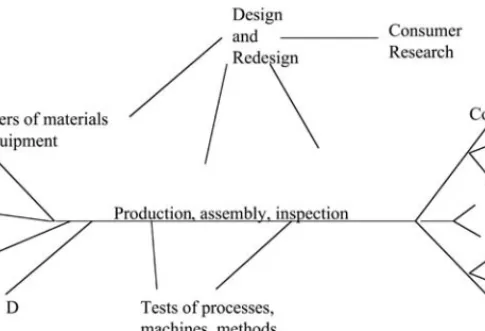
BUSINESS PROCESS ORIENTATION IN THE 90s
As with the other models discussed so far, the implication is that it will lead to a company's success if the management challenges can be overcome. If a solution to the management and reward issues can be found, this model will be a significant advance in organizational technology that will lead to reduced conflict and improved connectedness in an enterprise.
TECHNOLOGY ENABLEMENT
A process itself was defined as “a specific arrangement of work activities in time and place, with a beginning and an end, and clearly identified inputs and outputs, a structure for action.” The existing hierarchical structure is a “slice in time” representation of responsibilities and reporting relationships. Clearly defined process owners are also positioned as a critical dimension of the new model.
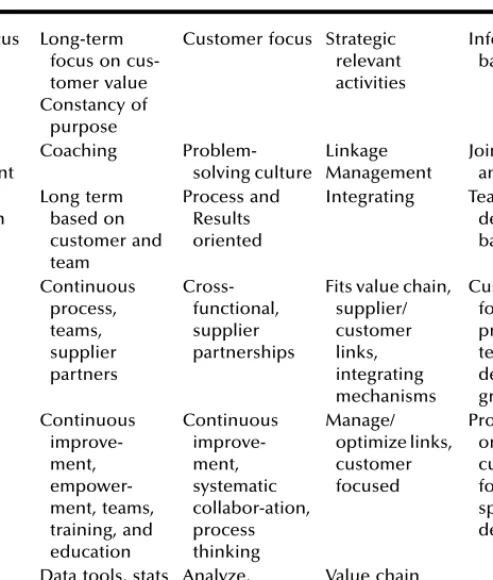
ORGANIZATIONAL DESIGN AND CULTURE
With this 1993 article, Bryne popularized the term "horizontal organization" and provided a prescriptive definition of a business process-oriented model. Detoro and McCabe suggested that business process management solves many of the sub-optimization problems in traditional structures because it focuses on the customer, manages handoffs between functions, and avoids the mindset of employees having an interest in the bottom line and not just what happens. their departments.
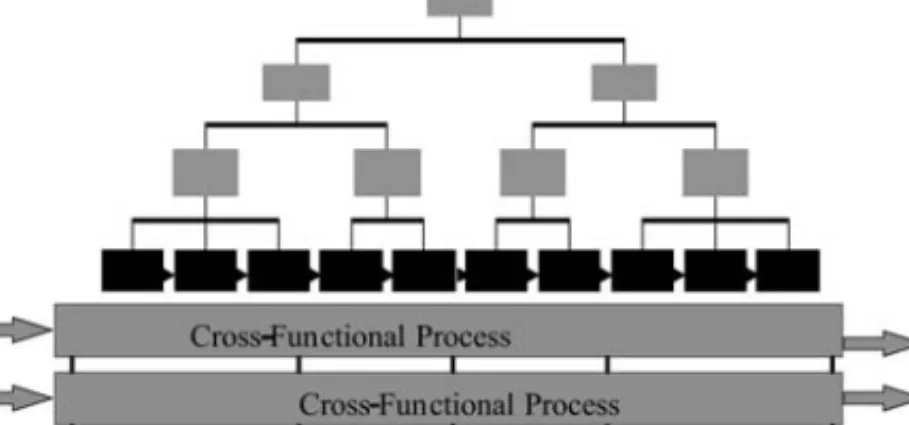
BUSINESS PROCESS ORIENTATION IN 2000
Cross-functional issues are rarely dealt with effectively and as a result the performance of the organization is not optimized. BPO as defined by Detoro and McCabe seems to be the restructuring and review of the organization towards process, teams and results.
THE E-CORPORATION
In a presentation to Wall Street analysts, IBM's Lou Gerstner described the new dot-com companies as "bubbles before the storm - all lit up, throwing sparks." But he continued, "The storm that is coming—the real disturbance in force—is when the thousands and thousands of institutions that exist today seize the power of this global computing and communications infrastructure and use it to transform themselves. Integrating such mechanisms such as clustering, reward systems and information are also key elements that drive business process orientation.
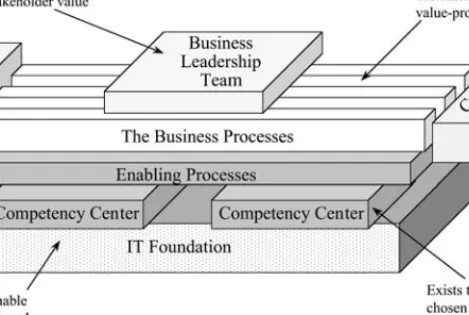
DEFINING AND MEASURING BPO
STUDY OVERVIEW
Developing BPO Definitions and Measures
This effort began with the development of several definitions derived from an extensive review of the published literature on the subject. A 5-point Likert scale was used, with 1 indicating that I strongly disagree with the relevance of the question or measure and 5 indicating that I strongly agree.
Expanded Testing and Further Validation
These data became the basis for examining BPO and its impact on the organization, which will be discussed further in the next chapter. Additional validity of the BPO measures and concept was provided by the fact that organizational relationships were logically proposed as "Does this make sense?" validity test was performed in statistical testing.
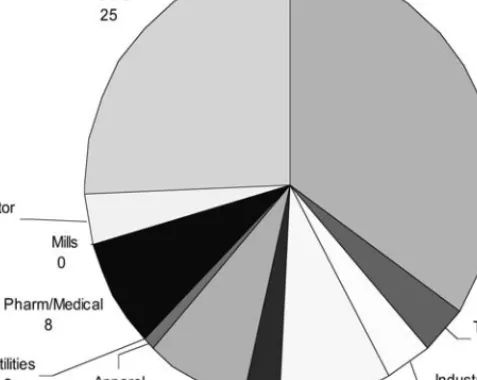
CONCLUSION
BPO AND ORGANIZATIONAL PERFORMANCE
DOES BPO MATTER?
The overall long-term health of an organization can be predicted based on the attitudes of its members. It has been found that team spirit and the sense of “being in it together”, usually described as esprit de corps, are the energy and glue of an organization.
RESEARCH FINDINGS
Given the strong relationship between PM and overall performance (OP1), this seems to indicate that process-oriented measures contribute to greater overall performance. The strong relationship with EC and the conflict and attachment factors indicate that process-oriented measures will decrease conflict, increase attachment, and result in an increase in the overall sense of EC.

DISCOVERING THE MAGNITUDE OF THE RELATIONSHIPS
CONCLUSIONS
This model also helps to highlight focus areas of effort required for an organization to move forward on this journey to a business process oriented organization.
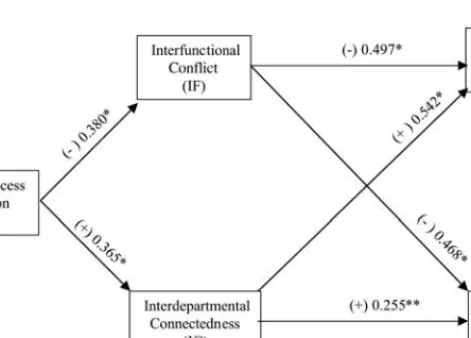
BENCHMARKING USING THE BPO MATURITY MODEL
WHAT IS BPO MATURITY?
The percentages shown on the high-level maturity model represent the percentages of respondents at each stage in the database. In this example, this organization is slightly above the Defined stage, as indicated by the high-level maturity model.
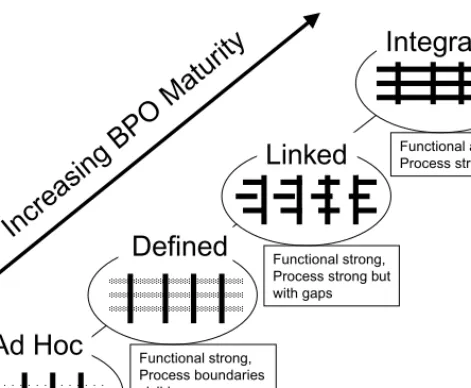
USING BPO MATURITY TO ALIGN THE E-CORPORATION
From this example, you can see how the BPO measurement system can be used as a critical strategic tool for building e-corporate networks for today's economy. In addition to the BPO measurement tool and the maturity model, we have included an additional assessment tool in Appendix B.
INTRODUCING BPO IN MANUFACTURING
TECHNOLOGY DRIVEN BPO IN MANUFACTURING
Worldwide Laboratories clearly has a problem in the area that supports the earlier diagnosis and recommendation: 69% of respondents answered "strongly disagree" or "strongly disagree." This indicates an almost total lack of procedural language. This question was answered by 68% of Worldwide Laboratories respondents with “strongly disagree” or “strongly disagree.”
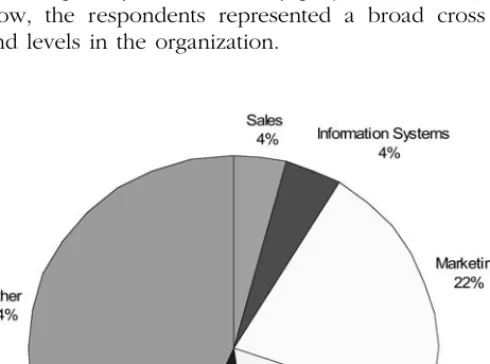
APPLYING BPO TO SERVICE OPERATIONS
IMPORTANCE OF PROCESS ORIENTATION IN SERVICE BUSINESSES
This merger and consolidation hyperactivity had a major impact on the people, structure and processes of the affected companies. As with many service companies, most of the billable work done by the acquired firms was performed at the client site.
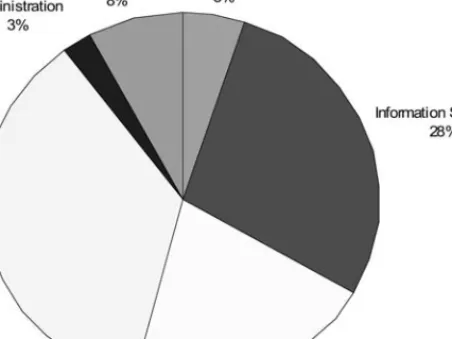
CL TECHNOLOGIES DETAILED BENCHMARKING ANALYSIS
DIAGNOSING THE ISSUES
To further explore the nature of the service business, the PJ component should be discussed. With the inherently decentralized nature of the IT services business, only process control performed by those responsible for the process can work.
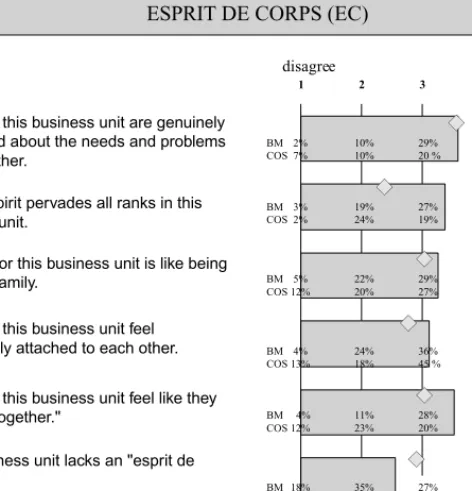
NOTE
BPO AND SUPPLY CHAIN MANAGEMENT
WHAT IS THE SUPPLY CHAIN MANAGEMENT?
The sampling frame used in our study was constructed from a membership list of the Supply Chain Council. The structure of the process appears to be more important than in our original research, while the order of Figure 8.7 Levels of BPO components in supply chain management.

IMPLEMENTING AND EVALUATING
THE JOURNEY OF BUSINESS PROCESS ORIENTATION
DEFINING THE END GOAL
Allocating resources, measuring success and rewarding people based on process dramatically changes and refocuses this power. Measuring and rewarding people based on work outside of their "function" or bosses' spheres of influence also tears at the functional power structure.
BUILDING THE PROCESS VIEW
Measures built around these interactions are, from the customer's perspective, the essence of business process performance. Supporting processes are not as unimportant as their position on the map might imply; they are shown at the bottom of the map because they are furthest from the customer.
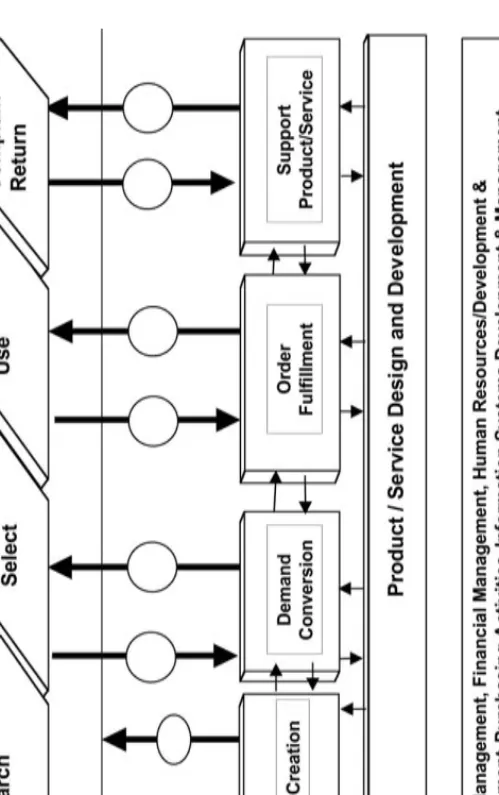
STAYING ON TRACK
Process owners lead this with the deep involvement of all process team members. The process teams were required to validate and present the "process" to the process owner.
COURAGE TO CHANGE
CONCLUSION: BPO AND THE NEW ECONOMY
Independent investors are organizing independent exchanges that exist in processes between companies in a market. Inspired by the challenges in the new economy and the research, case studies, and conclusions presented in this book, we hope you have concluded that practicing a business process orientation can result in a major competitive advantage.
Appendix A
CASE STUDIES
CASE STUDY
ABIG: BUILDING A CORE PROCESS FOUNDATION*
BUSINESS NEED
PREPARATION
During this phase, each sub-team met with different stakeholders and participants in the core process. A thorough analysis of the information gathered allowed the sub-team to develop preliminary high-level cross-functional process flows for each core process.
BUILD STAGE
Delivery, queues and cycle times were continuously measured and compared to AS-IS performance indicators. Executive management sponsored various incentives to encourage progress toward expected reduction percentages in deliverables, queues, and cycle times of each core process, as described in Table A.1.
IMPLEMENTATION STAGE
The activity nomenclature at the main stage of the business process became the basis for the classification and management of all organizational development systems and projects. By identifying the process, the technology needed to support the process was identified as well as the organizational structure needed to support regular business operations.
RESULTS
These business needs were used to create a TO-BE process that meets today's needs and those predicted for tomorrow. Once positions and training needs were identified, it became apparent that market standards needed to be changed to support the company's vision of how business should be run.
QUESTIONS
Management must be patient in waiting for the results of BPR initiatives - they take time. Assurant's member companies have more than 110 years of combined experience in the specialty insurance industry, operating in the United States, Canada, Latin America, the Caribbean, Ireland and the United Kingdom.
BOSTON MARKET*
During this time, the food tray always remains on the service side of the window and not in the customer's possession. Other times, the customer has already paid and is waiting at the counter for his or her sandwich.

EPILOGUE
Customers would often forget to present the coupon to the cashier due to the confusing nature of the queuing system. What were the implications of the aggressive use of coupons on Boston Market's overall strategy.

NEW SOUTH, INC
CREATING A CONTINUOUS IMPROVEMENT CULTURE*
The initial focus of the production process improvement team was on the processing of log receipts and storage in the factories – the first step in the wood production process. The president leveraged the continuous improvement initiatives: the vision, the successes of the process team, and the development of senior team management skills.
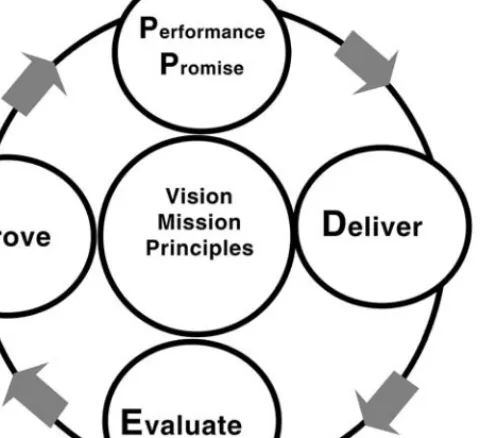
KEYS TO SUCCESS
Since 70% of the cost of running a sawmill is in lumber costs, savings in that area had a significant impact on the bottom line. He and the senior team were committed to making continuous improvement an essential part of the planning and implementation process at New South during those critical discussions with board members and shareholders.
TIME INSURANCE: A STUDY OF PROCESS QUALITY
IMPROVEMENT*
Time's team created a new detailed business process map as the primary documentation of the new design. The new process contained only 85 process steps, more than 60% of which added value to the customer.
Appendix B
BUSINESS PROCESS ASSESSMENT TOOL
BUSINESS PROCESS ASSESSMENT TOOL*
ASSESSING BUSINESS PROCESSES
An organization's management and policy includes those standards that are broad and require the focused action of those managers most responsible for improving business processes. Employee practices refer to those actions that employees must perform or aim to improve business processes with added value.
BUSINESS PROCESS ASSESSMENT TOOL
Every business process has a champion who owns the process and constantly strives to improve it. Managers and supervisors are trained in coaching skills to assist employees in their business process improvement projects.
Appendix C
FINAL SURVEY QUESTIONS AND DETAILED
CORRELATION AND REGRESSION RESULTS
SUPPLY CHAIN DECISION PROCESS ASSESSMENT*
Common themes within each area of the supply chain decision-making process Strategies, tactics and philosophy components common to all. Your information systems currently support supply chain processes Not at all a little Somewhat Mostly completely
BUSINESS PROCESS ORIENTATION QUESTIONNAIRE*
Interdepartmental Dynamics (ID)
In this business unit, it's easy to talk to just about anyone, regardless of their rank. General questions required for analysis and reporting of results. Circle your answers to the following questions.
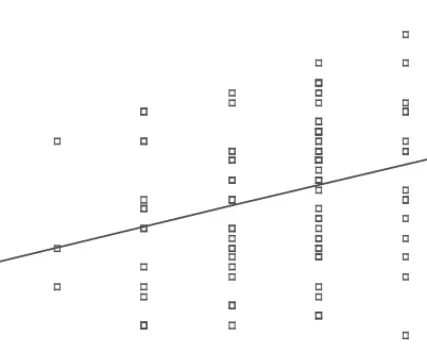
GLOSSARY
